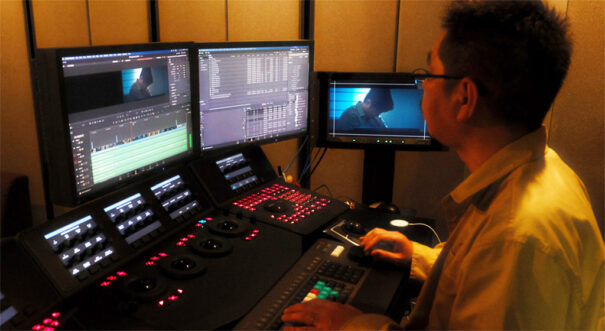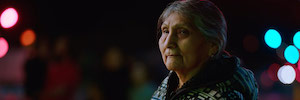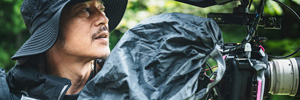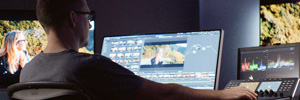DaVinci Resolve Studio, key to ‘Winny’ editing, color grading and sound mixing
Genta Tamaki (Interceptor) and Takamitsu Hoshiko (DI Factory) chose DaVinci Resolve Studio (Blackmagic Design) to do the editing, color grading, visual effects and sound mixing for the feature film ‘Winny’.
Starring Masahiro Higashide and Takahiro Miura, Winny tells the story of Isamu Kaneko, the developer of Winny, a file sharing software that has been used since the early 2000s and whose use has grown exponentially. Winny’s features encouraged countless users to illegally upload and copy movies, video games or music, and the consequent leakage of a large amount of information and viruses. This situation led to problems in the social sphere, and the developer, Kaneko, was arrested on charges of aiding and abetting copyright infringement. Consequently, a legal advisory team was convened in order to protect the future and rights of the wrongfully arrested programmer.
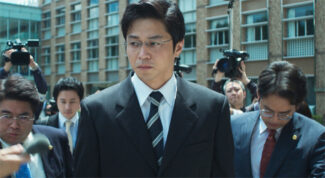 For the editing and color grading of the tape, Genta Tamaki and Takamitshu Hoshiko relied on DaVinci Resolve Studio, as well as DaVinci Resolve Editor Keyboard, DaVinci Resolve Speed Editor, Resolve Advanced Panel and DaVinci Resolve Micro Panel devices. Hoshiko provides more details on how Winny’s workflow, which benefited greatly from remote processes, went: “DaVinci Resolve was used for offline editing for this film, so the workflow for subsequent grading was quite easy. Normally, an editor would edit the offline material and export the final edit data in XML or AAF format. With the edit data and reference video, I conformed the project to make it ready for grading in DaVinci Resolve.”
For the editing and color grading of the tape, Genta Tamaki and Takamitshu Hoshiko relied on DaVinci Resolve Studio, as well as DaVinci Resolve Editor Keyboard, DaVinci Resolve Speed Editor, Resolve Advanced Panel and DaVinci Resolve Micro Panel devices. Hoshiko provides more details on how Winny’s workflow, which benefited greatly from remote processes, went: “DaVinci Resolve was used for offline editing for this film, so the workflow for subsequent grading was quite easy. Normally, an editor would edit the offline material and export the final edit data in XML or AAF format. With the edit data and reference video, I conformed the project to make it ready for grading in DaVinci Resolve.”
Key to this process was the project file option, which generates the project file and the media files used in a single package. As Tamaki says, “That way, all Hoshiko had to do was open the project file on the SSD and everything he needed was lined up on the timeline.”
Color grading the film was full of challenging moments, which Hoshiko’s talent and DaVinci Resolve’s expertise were able to overcome. As the colorist himself says, “I did day for night grading in this film. The interrogation scene was graded to appear as if it were shot at night. Day for night grading gave a different look from a regular night scene shot with lighting. So, Kentaro Kishi, the cinematographer of this film, was pleased that we were able to bring an interesting look in this scene.”
¿Te gustó este artículo?
Suscríbete a nuestro RSS feed y no te perderás nada.



